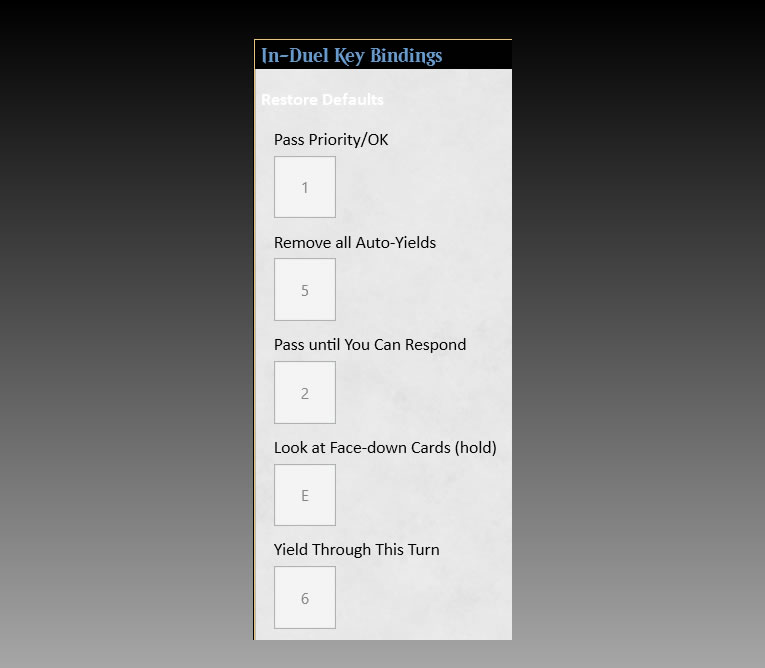Reading and Bluffing Opponents on MTGO
Heart Pounding
You are in the top 8 of a challenge on Magic Online, heart pounding as you think about how much money you will make if you win this match. With your mind not fully engaged on the task at hand, you make a slip, which leads to another because you are tilted, and you lose the match. Staying focused during an important match is the first step, exploiting our opponent is the next.
Staying focused during an important match is the first step, exploiting our opponent is the next.
A whole new topic
My name is Julian Jakobovits, or JUJUBEAN__2004 online. I’ve had a lot of fun and some decent results over the past 2 years playing MTGO and I thought I’d share some information on an aspect of Magic that hasn’t been discussed.
While I’m not the most profound Magic: the Gathering writer out there, I have a lot to say on a topic that I think will benefit many competitive players. This topic regards the most important feature of the game, the opponent.
You can always search up the opponent’s latest decklist on mtggoldfish, but this is different. This is where you can turn Magic into a competitive sport. You must adapt. Some of this may sound cliche, but often the only way to gain an edge is to keep stepping forward into the opponent’s territory.
Reading your opponent
The MTGO program is where the best of the best come to showcase their skills, and we need to be prepared to take advantage of every situation, in order to gain as many percentage points as we can. After my lack of involvement in my discussion class today, my college professor told me that I needed to be an active reader instead of a passive one, when it came to the chapter we were supposed to read beforehand. This directly relates to Magic Online because we need to be attentive to what we believe about our opponent, and what we can control based on those beliefs.
Let’s start with reading the opponent. Playing online, we cannot see the opponent. With this in mind, we have the right to move around and be as comfortable or uncomfortable in our chairs as we need to, in order to figure out our best line each turn. We need not stay too comfortable, especially when priority isn’t on us. Let’s delve into the specifics of this using some examples.
Example 1. Passing priority
When our opponent has “f8” turned on, they will pass the priority to us automatically when tapped out, assuming they don’t have any free spells to cast. Lots of players use this feature to speed up their play, and lower the amount of clicks that they have to make. We can make a clear read on what the opponent doesn’t have.
For example in Legacy if we cast a spell and it instantly resolves (no Force of Will/Daze), or in Modern if they tap out to cast a prismatic ending and it instantly is our turn (no Solitude/Endurance).

Example 2. Play Speed
Moving away from technicalities and closer to general theory, you can make reads based on almost every play and how long your opponent takes to make that play in comparison to the speed of the rest of their play. If you play a mediocre 3 drop in limited, and your opponent thinks for a minute if they should spend their Essence Scatter on it, you better pick that up. If you have the slightest hint telling you that they have it, you can craft your whole gameplan around that one Essence Scatter.
Bluffing you opponent
Bluffing your opponent in a match of over-the-board Magic isn’t the most difficult task, as long as you pull it off correctly. Lean into your “sighs” too much after your opponent plays a haste creature, and they might think to not play right into that Settle the Wreckage. Without being face to face, the MTGO bluffing system is quite tricky, but if practiced, will pay off big time. Let me show you some of my tricks.
Casting and retracting
If our opponent does anything that we may be able to react to, with any card legal, we want to give them the sense that we have that card, when we don’t. This will force them to be mindful of the probability of this card being in our hand, and will likely play around it for as long as they are willing to. One of my main strategies to get in my opponent’s head like this is to “cast” an instant in response to whatever is happening, then retract after thinking for 15 seconds. This will pop up the letters “JUJUBEAN__2004 is paying costs” on the side of the screen, which is very noticeable to anyone who isn’t praying with their face down as they hope for their Ancestral Recall to resolve. Now although this does give away that we have at least 1 instant in our hand, the upside is usually higher than the downside.
Yielding and unyielding
For this next example, you need to trust yourself. If you have a laggy computer or are playing from a parking lot on a hotspot, this one isn’t for you. Usually, the correct and first thing a player does after drawing their card for turn is attack, before playing any cards. Now let's say we have a counterspell, but want to give the impression that we have nothing. When you pass the turn, immediately “f6” or yield through the turn.

When the opponent goes to combat, they will be given the chance to attack, and go through damage without us making a click. They will hopefully think we have nothing, and start to cast an important spell. When you see “paying costs” or if they start to float mana, it’s time to press “5” or unyield, in order to make that unsuspected counterspell line pay off.

Use the clock as a source
The last and most important example that I can’t stress enough, is to simply tank on every decision where you could have something important (when you don’t). Use your clock as a resource, tank on every spell they tap out for in legacy if you want to represent that daze. We are leaving equity on the table that doesn’t need to be left out.
Final words
Ultimately, yes, some of my points and examples contradict each other. Now if you que into someone who has also read this article, I wish you both good luck in the mental battle. But I can only share what has worked for me. I’ve explored new ideas on the fly, and they’ve worked. That's why I wrote this article. However I can only figure out so much. It’s on you as a competitive MTGO player to find your own opportunities in this everchanging game. Be creative in your approach to Magic, especially at the highest levels.
Thanks for reading,
Bean Out.
If you liked this article maybe you will also find interesting on of the following ones What is Tempo?, How to Beat Tilt and Win More Games in Magic: The Gathering!, Building and breaking metagames: The Halo effect of Deckbuilding
Sign Up for MTGDecks newsletter
You'll receive a weekly email with more articles like this.
Blazing fast MTGO Grinder
Julian Jakobovits is one of the most promising young players in the Magic: The Gathering competitive scene. He is known for his speed and creativity when it comes to deck-building, always ahead of the curve in terms of the metagame. First and last online PT competitor, or like you can read in his Twitter profile "Just a kid who lives in Hawaii and wins magic tournaments".








